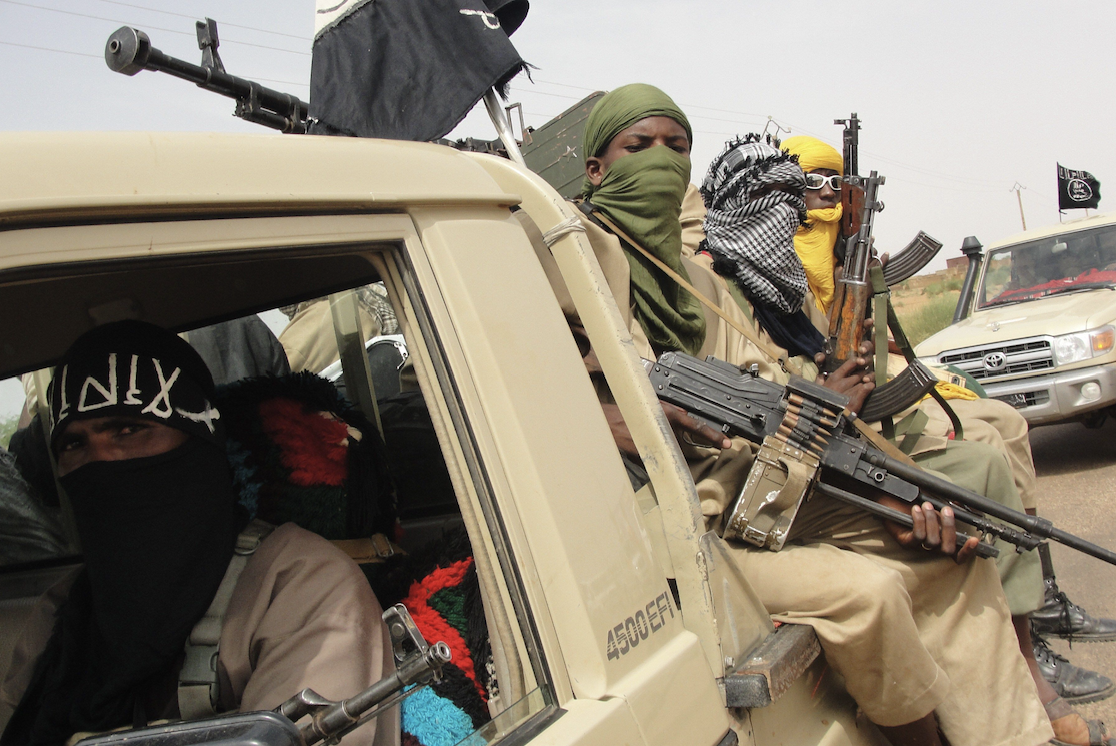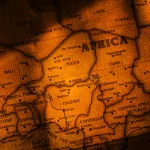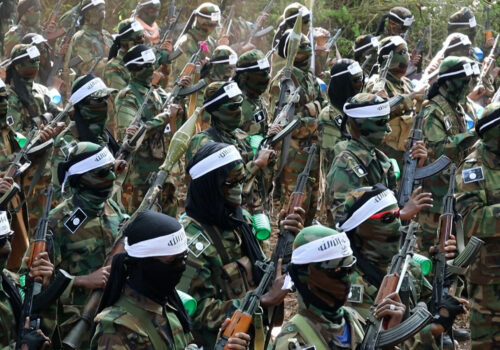Click here to download the PDF file of the article.
Episode 1: The Predecessors
Al-Qaeda and Islamic State attacks in Sahel are on the rise. Jama’at Nusrat al-Islam wal-Muslimin (JNIM) and the Islamic State in the Greater Sahara (ISGS) are two names that those following news from this part of the world are getting used to. Especially the strikes in Burkina Faso, Mali, and Niger “triangle” almost doubled compared to last year in the first seven months of 2024. The targets of these attacks are not only military or civilians but also two groups clashing with each other. Why is there a rise in the numbers? How should we make sense of the rising threat? How did the region come to this point? More importantly, where will the following countries be affected? Ghana? Togo? Benin?
We need an analysis that goes beyond the borders that are seen on the map. In this series of articles regarding al-Qaeda and Islamic State’s activities in the Sahel, I will try to answer these broad questions and make sense of what is taking place and what the future holds. A popular explanation for this rise may be attributed to the domino effect of military coups in the region that started in Mali in 2021 and was followed by Burkina Faso in 2022 and, lastly, Niger in 2023. On another note, one should underline the scars left in the region after France’s counter-terrorism operation, which lasted for eight years, covering five countries, Burkina Faso, Chad, Mali, Mauritania, and Niger, called Operation Barkhane. Nowadays, this operation is almost forgotten and, at the time, couldn’t receive as much global media attention as the US’s war in Afghanistan and Iraq.
In this article, I will play the tape backward a little. To set the story straight, one cannot comprehend the whole story without considering the wars neighboring the Sahel, especially in Algeria and Libya.
Violent non-state actors with global inspirations attribute immense importance to territorial influence and control. Al-Qaeda and Islamic State are two of the most significant actors of such kind. Almost four decades, starting from the late 1980s, Afghanistan to Syria and Iraq after 2014, sovereign states and the international community tackled the challenge of proto-states acting in the name of Jihad.
Algeria
The case of Algeria was one of the earliest cases where the dreams of Islamist movements to come to power by democratic elections vanished. Today, however, this is almost forgotten. In fact, when you search about the civil war in Algeria, it is expected that you end up reading about the battle against French colonialism and the Algerian revolution in 1962. However, for contemporary West African politics, the period infamously known as the Black Decade of Algeria in the 1990s and the early 2000s needs to be kept in mind. It started after yet another military coup against the rising Islamist political party, the Islamic Salvation Front.
Rapidly, the events turned into total chaos that spread across the border and even reached Europe. Soon after, Algeria became the laboratory of jihadi segmentation with different groups emerging in the country such as Mouvement Islamique Armé (MIA), Armée Islamique du Salut (AIS), Front Islamique du Djihad en Algérie (FIDA), Ligue Islamique de la Da’wa et du Djihad (LIDD) and most notorious of them all Groupe Islamique Armé (GIA).
Contrary to many conflicts that involved insurgencies that were using religious tones, Algeria didn’t receive outside support in the form of “foreign fighters.” On the contrary, the history of Jihadi foreign fighting has never seen something remotely like what happened in Algeria. The civil war that started in 1992 in Algeria coincided with the expulsion of foreign volunteers from Afghanistan and Pakistan. Algerians who were fighting in Afghanistan against the Soviet Union during the 1980s were able to return to their homes. However, this was not the case for all those who fought in Afghanistan. The country’s southern neighbor, Libya’s Islamist movement, the Libyan Islamic Fighting Group (LIFG), is a prime example of this. By 1989, the mass arrests launched by the Gaddafi government reduced the likelihood of LIFG returning to Libya to organize a social uprising. In 1992, as transnational volunteers began to leave Afghanistan and Pakistan and were unable to reach Libya, LIFG sought refuge in Sudan, Libya’s eastern neighbor, which at the time was ruled by an Islamist coup d’état. After returning to Africa, LIFG tried to maintain the transnational networks it had built during the war in Afghanistan and initially tried to participate in the conflict in Algeria. However, the organization was forced to abandon this attempt after a team of fifteen LIFG members traveling to Algeria were killed by violent Islamist groups in Algeria.
The civil war in Algeria started fading away as the government announced amnesty to the combatants in 1999. Although some of them accepted this deal, others splintered from GIA and formed Groupe Salafiste pour la Prédication et le Combat (GSPC). During post-9/11 and the War on Terror fog, GSPC increased its activities across Algeria, which later ended up pledging support for al-Qaeda in 2007, which came to be known as al-Qaeda in the Islamic Maghreb (AQIM). Military incursions against AQIM pushed the movement further southern part of Algeria towards the border regions of Mali and Niger. By this time profession of part-time jihadi and part-time smuggler has become a common thing in Sahara. Cross-border activity has a tradition in this part of the world, and jihadi movements are not immune to that, as was the case with the Mokhtar Belmokhtar, one of the most infamous leaders of jihadism in the region.
Libya
In the immediate aftermath of the Islamic State’s loss of its physical control of land in al-Baghuz, Iraq-Syria border, in 2019, the question was raised: where will be the next state established? Before going forward, it’s better to remember the group’s outreach.
Two years prior to Baghuz, in 2017, the attention was on Southeast Asia, the Philippines to be precise, where ISIS-linked groups seized the southern part of Marawi. Local military operations soon crushed it. However, this was a regional matter that didn’t force the international coalition to act. On the contrary, around the same period, global forces were busy with a crisis much nearer to their shores, Libya.
The groundwork for this initiative was laid when Libyan volunteers who had participated in the 2003 Iraq war and the 2012 Syrian war returned to Derna, Libya. The connection between Libya and Syria was established early on, significantly since the uprising in Syria was being suppressed in an armed manner like Libya. By June 2012, between 70 and 300 people from Libya, Tunisia, and Algeria had traveled to Syria to fight.
Around this time, a Libyan organization called Katibat Battar al-Libi emerged in Syria, but it was not yet affiliated with any group. In the April 2013 split between the Islamic State of Iraq and the Levant (ISIL) and Jabhat al-Nusra in Syria, Katibat sided with ISIL. In the period following this merger, returns from Syria to Libya started, and some of the members of Katibat returned to their country, especially to the city of Derna, and made efforts to prepare the social ground for the ideological structure of ISIS.
In October 2014, the name of the group was changed to Wilayat Derna, while the leader of the Islamic State, Abu Bakr al-Baghdadi, announced the establishment of three new provinces in Libya in an audio recording released a month later. The establishment of the Islamic State in Derna did not go smoothly. On the contrary, the Islamic State in Libya withdrew from Derna to Sirte in the west of the country in July 2015 following a campaign against the organization, which was accompanied by an increase in repression against the population and attacks against different ideological groups in the city. Unlike Derna, the Islamic State has established a relatively longer-term structure in Sirte, gaining ground here by recruiting not only those with Islamist backgrounds, as in Iraq and Syria, but also those loyal to Gaddafi. The Coalition of Western countries was determined to crush this rise in Libya, which resulted in the defeat of the group in late 2016. This forced the group’s members and loyalists to evacuate to the southern parts of the country, especially Niger.
One of the most important conclusions that can be made regarding the rise of al-Qaeda and Islamic State in the Sahel region is the policy of keeping these groups away from the shores of the Mediterranean and close to Europe’s borders but pushing them further south. In the following article, I will be analyzing the dynamics of attacks of these groups in Mali, Burkina Faso and Niger.






